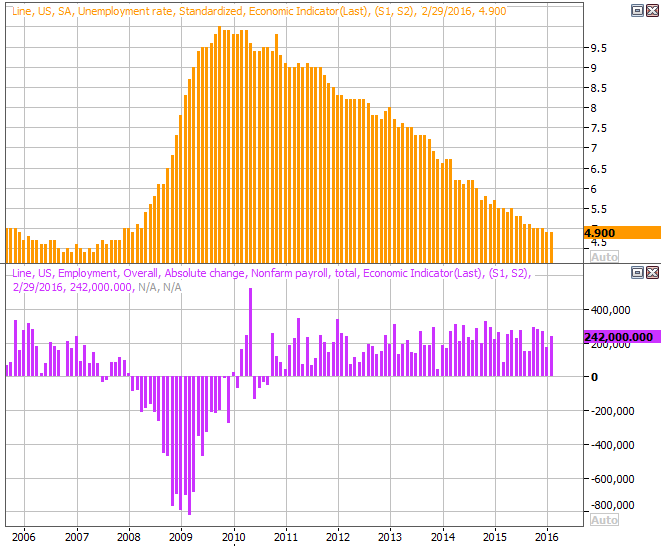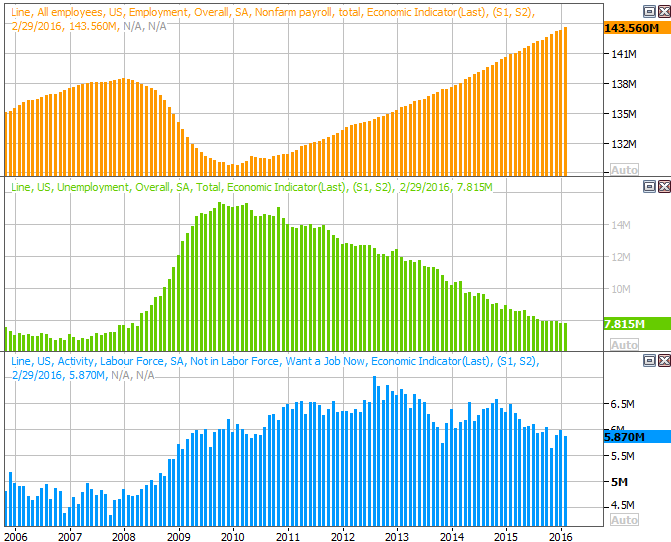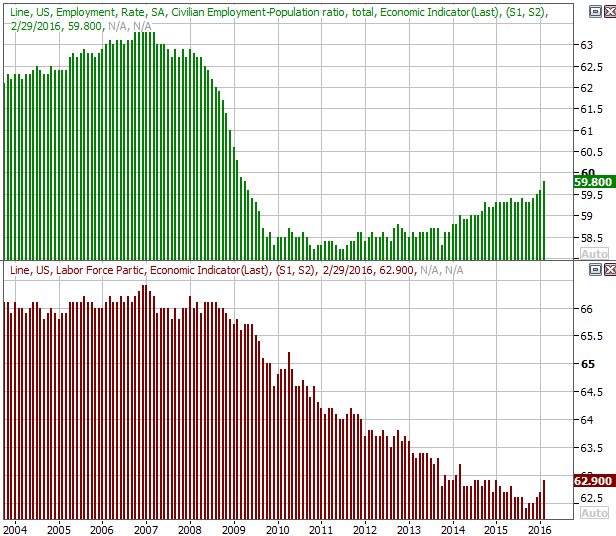The Jobs Report Was Even Healthier Than The Numbers Suggest

February Job Growth Was Even Healthier Than the Numbers Suggest
Although February's job-growth numbers weren't big enough to pull the Department of Labor's official unemployment rate any lower than its January reading of 4.9%, we saw measurable and meaningful progress on all other fronts.
The biggest measure of progress was last month's payroll growth - the nation added (net) 242,000 new jobs in February. January's and December's job-growth levels were adjusted upward too, by a total of 30,000 between the two months.
While the rate of job growth has been steady since 2011 (on average), "steady" may not be enough to really light a fire under the economy. It's been said we need to see job growth of closer to 400,000 new payrolls per month to really throw economic growth into high gear. While persistent job growth around 200,000 "works", it's a slow grind. That being said...
It's a less-touted aspect of the monthly jobs report from the DOL, but the absolute employment level, the absolute unemployment level, and the number of people not counted as being in the labor force (but still want a job) are all moving in a healthy direction.
In the same vein - and this may be the unsung hero of February's jobs report - the job market's participation rates finally started to heat up at a faster pace. That is, the employment-to-population ratio surged to a multi-year high reading of 59.8% last month, while the labor force participation rate moved to a multi-month high of 62.9%.
This is a sign that workers are not only bothering to look for jobs again, but they're finding them. This may quietly the most bullish clue in this month's update, putting a positive spin on just so-so payroll growth numbers. Indeed, considering we saw this many people flow into the workforce (with or without jobs), it's impressive that we didn't see the unemployment rate inch higher. [The unemployment rate is the number of officially unemployed people divided by the number of people in the labor force, working or not.]



